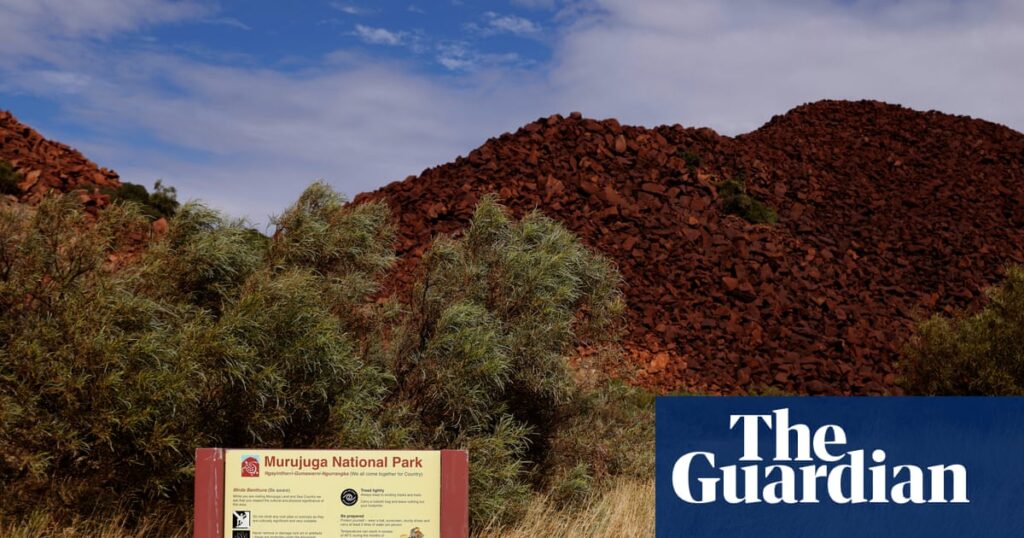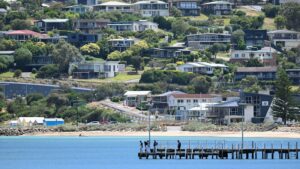
The Albanese government has agreed to relax proposed protections for world heritage-listed Indigenous rock art, following pressure from Woodside Energy over its North West Shelf gas development. The decision, outlined in a “statement of reasons” by Environment Minister Murray Watt, allows the extension of one of the globe’s largest gas export operations until 2070, despite concerns over industrial emissions harming the Murujuga rock art in northern Western Australia.
The statement reveals that Minister Watt accepted advice from the environment department, which cited “multiple lines of scientific and other evidence” indicating that emissions were adversely affecting the Murujuga cultural landscape, home to over a million petroglyphs. The minister acknowledged that future pollution from the North West Shelf LNG facility could lead to “degradation, damage, notable alteration, modification, obscuring or diminishing” of the area’s natural heritage.
Background and Negotiations
Initially, in May, Watt provisionally ruled that Woodside could continue operations beyond 2030 only if it reduced acidic emissions, such as nitrogen oxides and sulfur dioxide, to levels that would not impact the rock art. However, Woodside argued that these conditions were “not technically feasible,” claiming they amounted to an “effective refusal” that would halt operations by 2030.
After extended negotiations, the final conditions announced in September require a 60% reduction in acidic pollution by 2030 and a 90% reduction by 2061. Despite being more stringent than those set by the Western Australian government, experts suggest these measures could lead to the closure of the facility’s oldest LNG production line, operational since the 1980s.
Expert Opinions and Reactions
Minister Watt’s statement described the final conditions as “stringent,” asserting that the development would not have an “unacceptable impact” on the heritage values of the area. He admitted that the decision to mandate gradual rather than immediate pollution cuts increased the likelihood of short-term rock art damage, but he believed the social and economic benefits outweighed the risks.
Raelene Cooper, a Mardathoonera woman and traditional owner, criticized the decision, noting that the minister’s statement corroborated claims by traditional custodians and scientists about inadequate assessment and monitoring by the WA government. “This is an absolutely extraordinary document,” she remarked, “admitting every major point the government has been covering up about the impacts on Murujuga’s sacred rock art.”
“It is confirmed that the industrial emissions at Murujuga have damaged the rock art, they continue to damage the rock art, and they will cause further damage for the full 45 years of the North West Shelf project,” said Benjamin Smith, a professor of archaeology and world rock art expert at the University of Western Australia.
Balancing Environmental and Economic Concerns
Minister Watt emphasized that the consultation with Woodside ensured the conditions were “technically feasible” and protective of the rock art. “The Albanese government is committed to protecting the environment and First Nations cultural heritage, as well as protecting jobs,” he stated. “It doesn’t have to be one or the other, and I believe this decision has got that balance right.”
However, WA Greens climate spokesperson Sophie McNeill argued that the federal government had “caved to gas industry pressure” by approving the 40-year extension. She highlighted that Watt’s statement found the WA Labor government’s conditions insufficient to prevent harm to the rock art.
A spokesperson for the WA government reiterated its commitment to decisions based on the best available science. Meanwhile, a Woodside spokesperson claimed the company took its cultural heritage responsibilities seriously, noting that research on emissions’ impact on rock art had “not been conclusive.”
Future Implications
The North West Shelf extension has been labeled a “carbon bomb,” potentially releasing billions of tonnes of CO2, primarily after the gas is exported and burned overseas. Under national environmental law, Minister Watt was required to focus solely on local impacts, not the broader climate change contributions.
As the debate continues, the decision underscores the ongoing tension between economic development and cultural preservation. The future of the Murujuga rock art remains uncertain, with stakeholders closely monitoring the implementation and effectiveness of the revised conditions.







